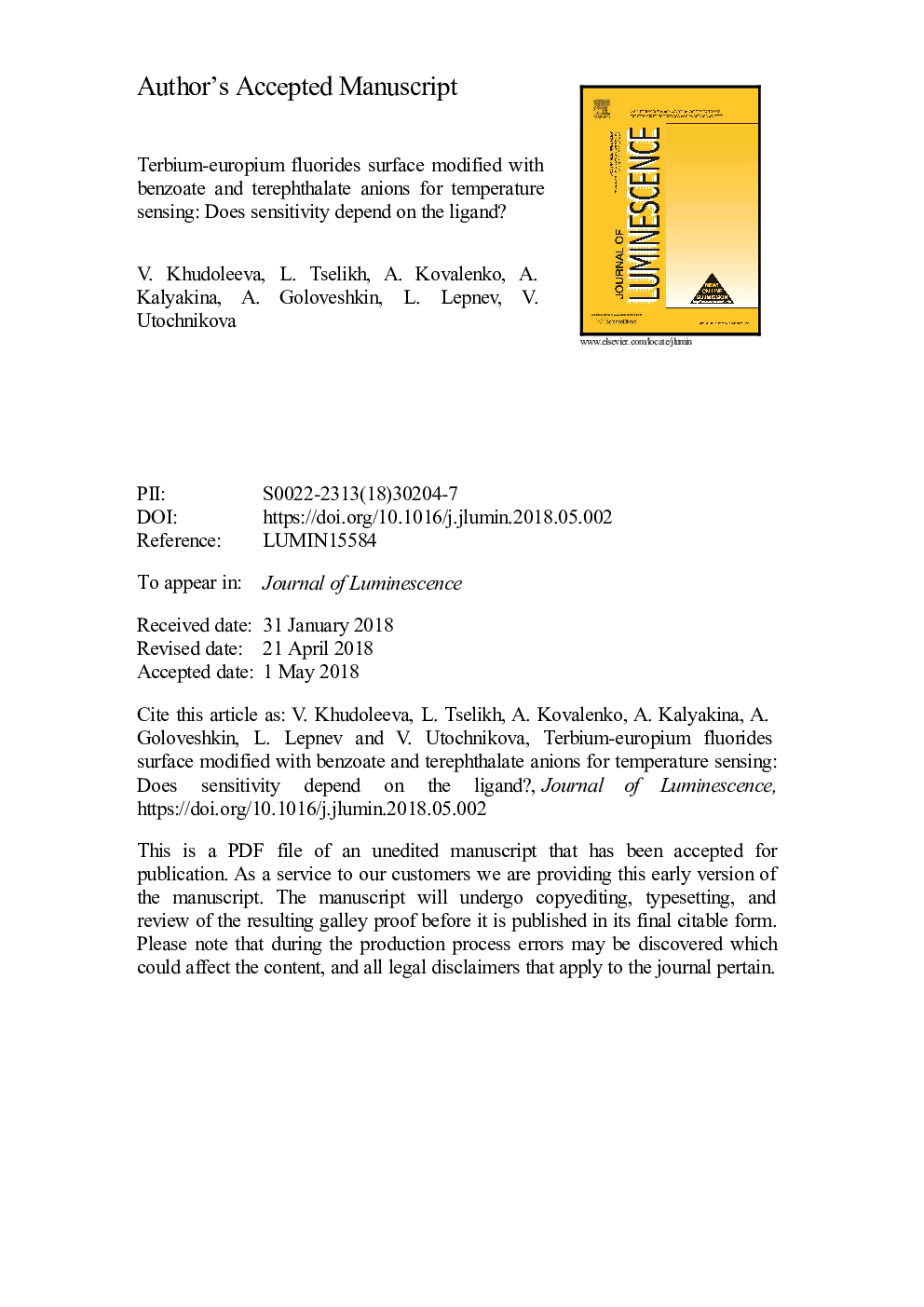| Article ID | Journal | Published Year | Pages | File Type |
|---|---|---|---|---|
| 7840072 | Journal of Luminescence | 2018 | 20 Pages |
Abstract
Synthesis, morphology investigation and the study of luminescent properties temperature dependence of surface modified bimetallic europium-terbium fluorides (L@TbxEu1-xF3, L = benzoate or terephthalate anion), as well as their use in bioimaging is described. It was shown that the synthetic route and the solvent affects the TbxEu1-xF3 nanoparticle morphology. Moreover, the oriented attachment of Tb0.999Eu0.001F3 crystallites was observed for the first time. Luminescence intensity of nanoparticle surface modified with aromatic carboxylate anions significantly increased, depending on the ligand used, while the temperature sensitivity of TbxEu1-xF3 was only slightly affected by the organic ligand. The examination of L@Tb0.999Eu0.001F3 temperature dependence revealed excellent linearity both in low temperature range (77-293â¯K) and in physiological range (305-330â¯K) with temperature sensitivity of 0.4% Kâ1 at 40â¯Â°C. According to in cellulo tests, tph@Tb0.999Eu0.001F3 demonstrated uniform distribution in cell cytoplasm and exhibited intense ionic luminescence of both terbium and europium.
Related Topics
Physical Sciences and Engineering
Chemistry
Physical and Theoretical Chemistry
Authors
V. Khudoleeva, L. Tcelykh, A. Kovalenko, A. Kalyakina, A. Goloveshkin, L. Lepnev, V. Utochnikova,
